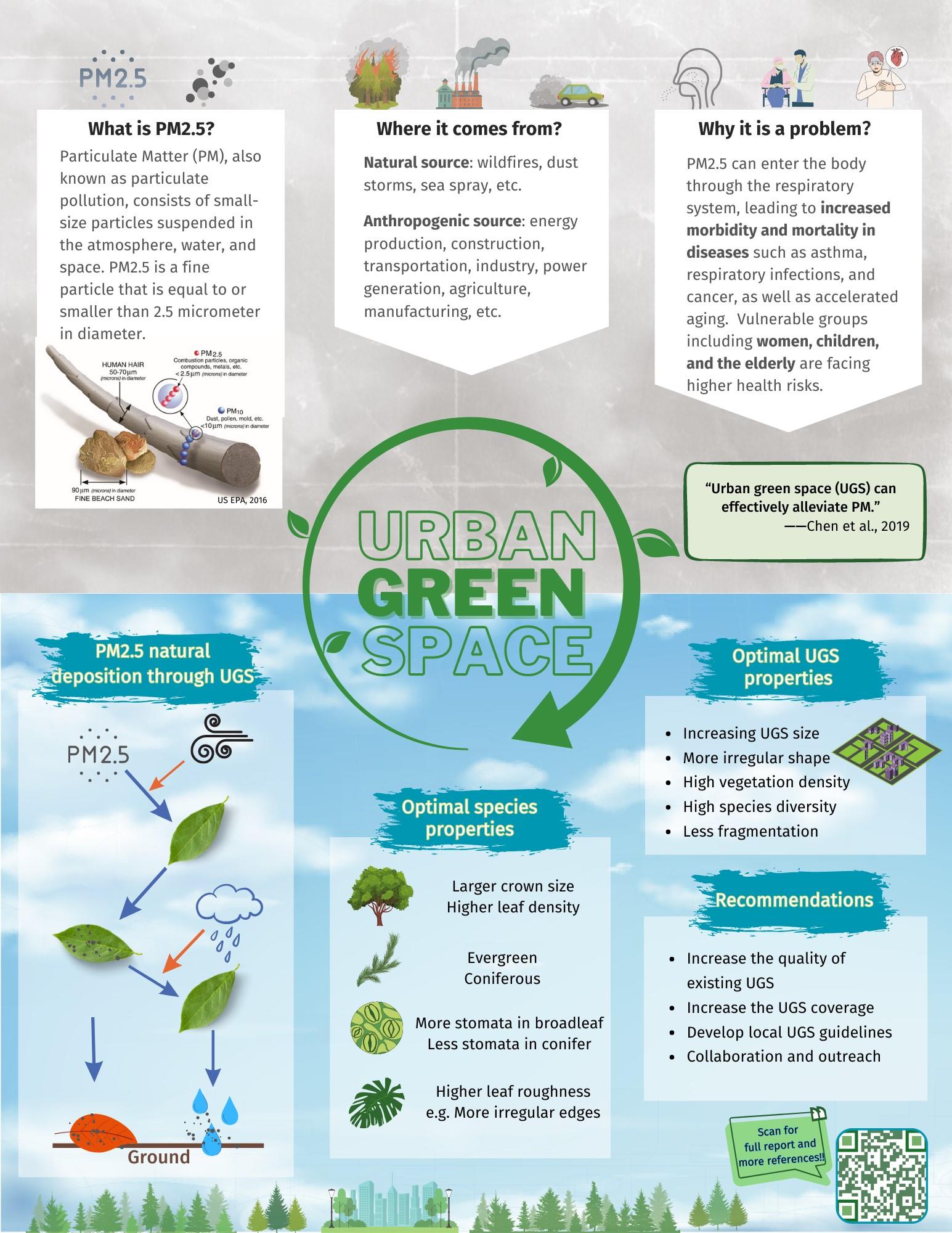Exploring the Effects of Urban Green Space in Reducing Ambient Fine Particulate Matter (PM2.5)
Sabrina Hu, MLWS 2023
With urbanization and industrialization, particulate matter (PM2.5) poses significant concerns for human health and urban ecosystems. These fine particles, smaller than 2.5 micrometers, result from both natural phenomena like wildfires, dust storms, and anthropogenic activities such as energy production, construction, transportation, and manufacturing. PM2.5's ultrafine size allows it to enter the human body through breathing, leading to increased morbidity and mortality from various diseases like cardiopulmonary issues, respiratory infections, and multiple organ diseases, affecting specific vulnerable groups like women, children, and the elderly. Long-term exposure to PM2.5 is linked to accelerated aging.
Urban expansion heightens the need to reduce air pollution, and studies demonstrate that Urban Green Spaces (UGS) play a crucial role in removing PM2.5. UGS positively impacts PM2.5 reduction through indoor and field experiments, spatial analysis, and appropriate configurations, structures, and patterns. While UGS has a removal capacity threshold, optimizing these spaces considering climate and topography enhances their efficacy in removing PM2.5, suggesting UGS as a valuable tool for combating urban air pollution.
